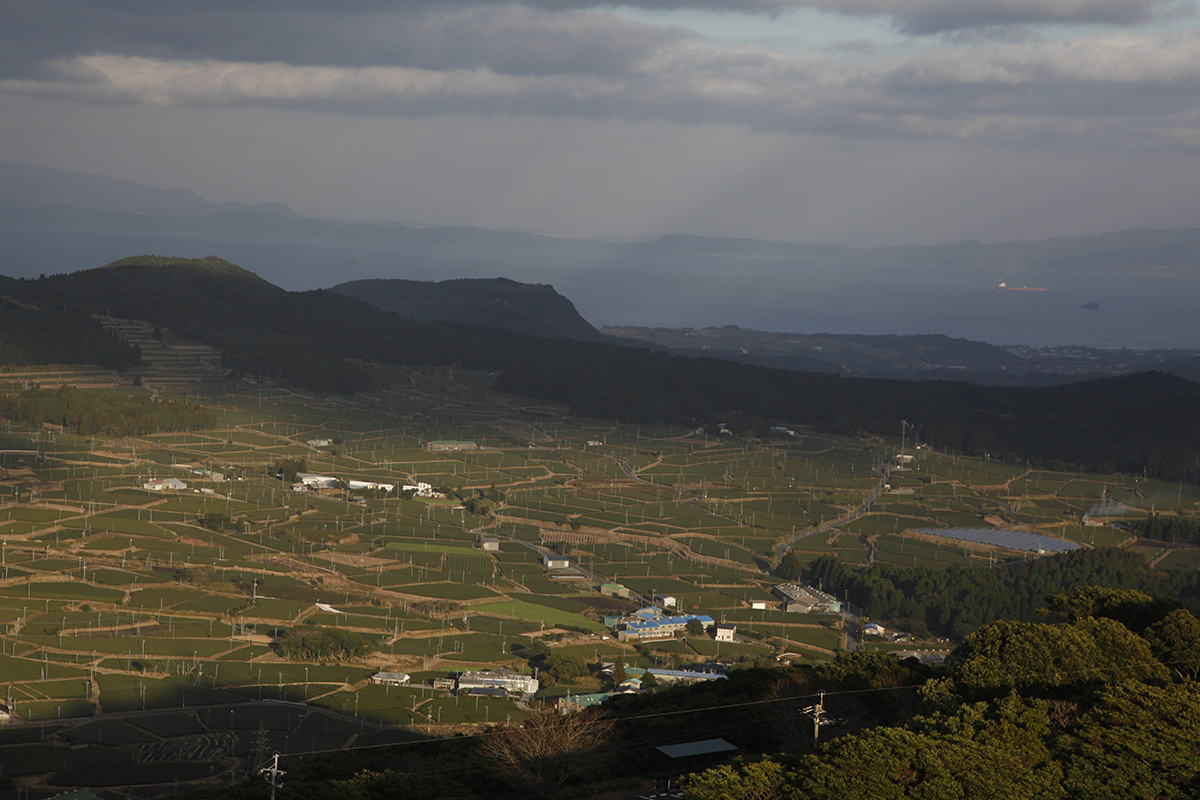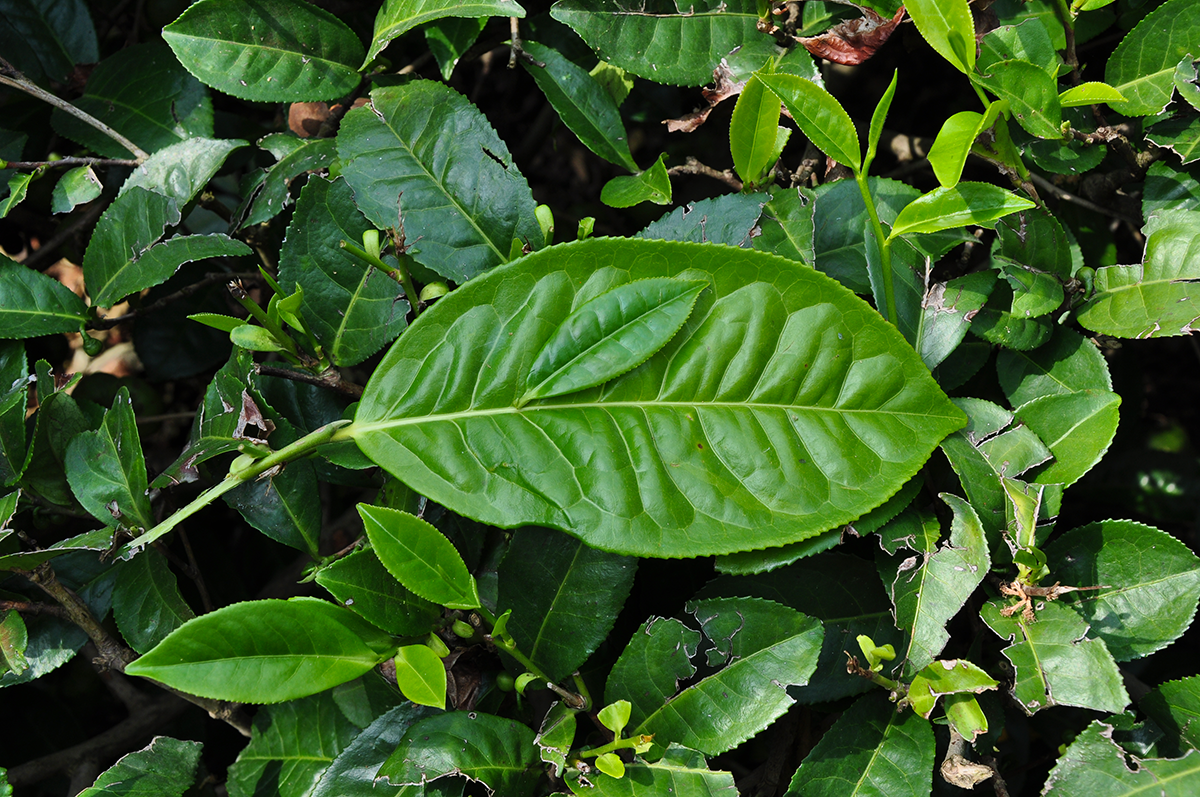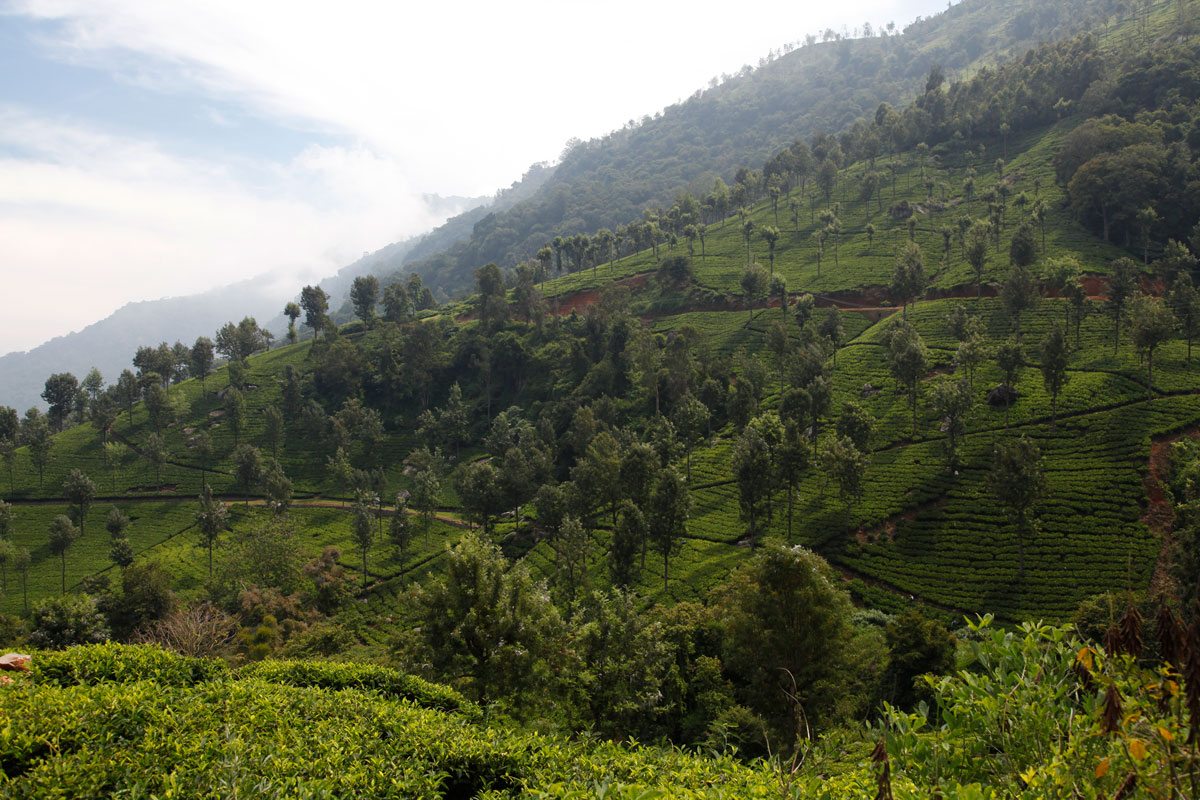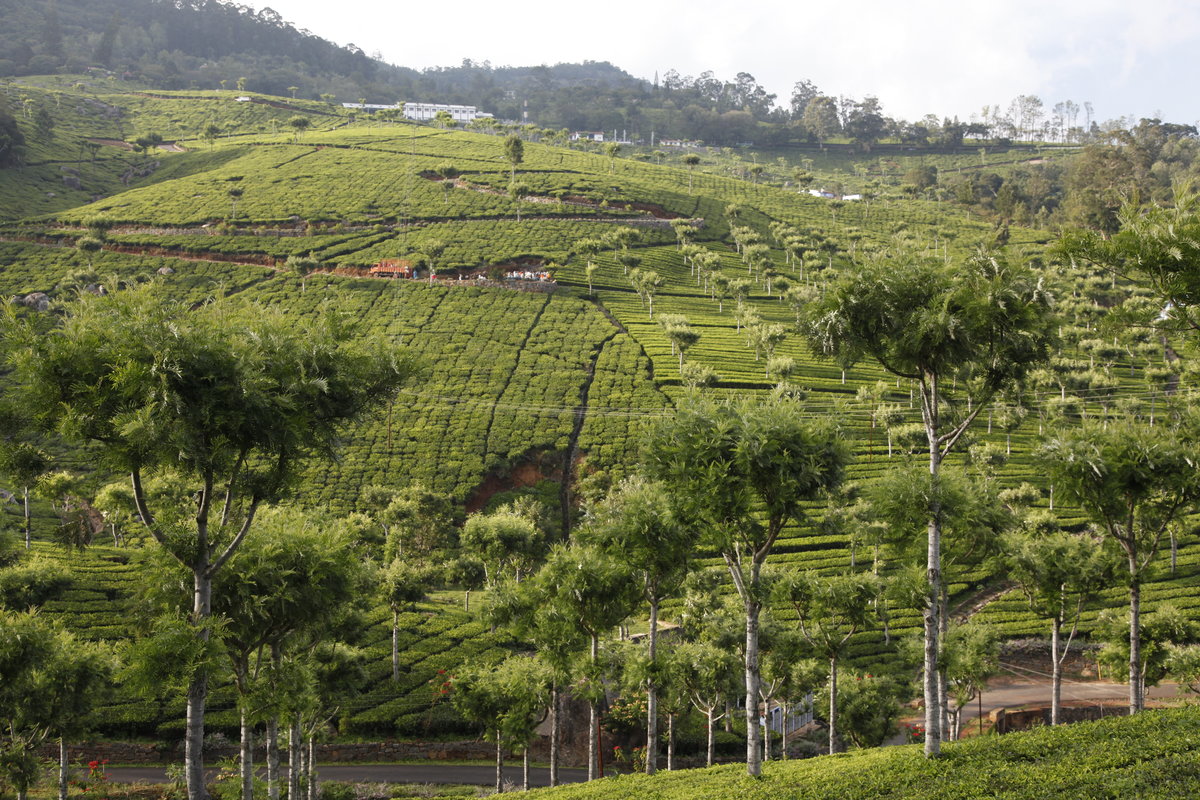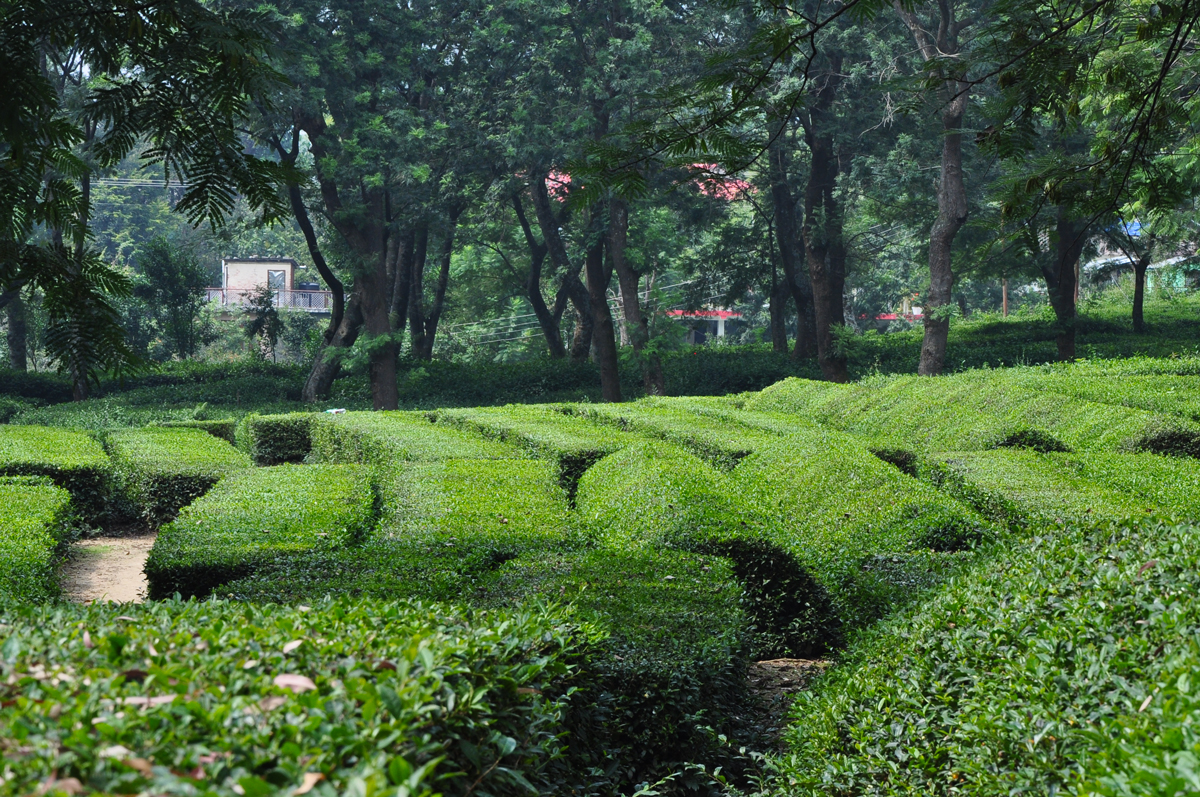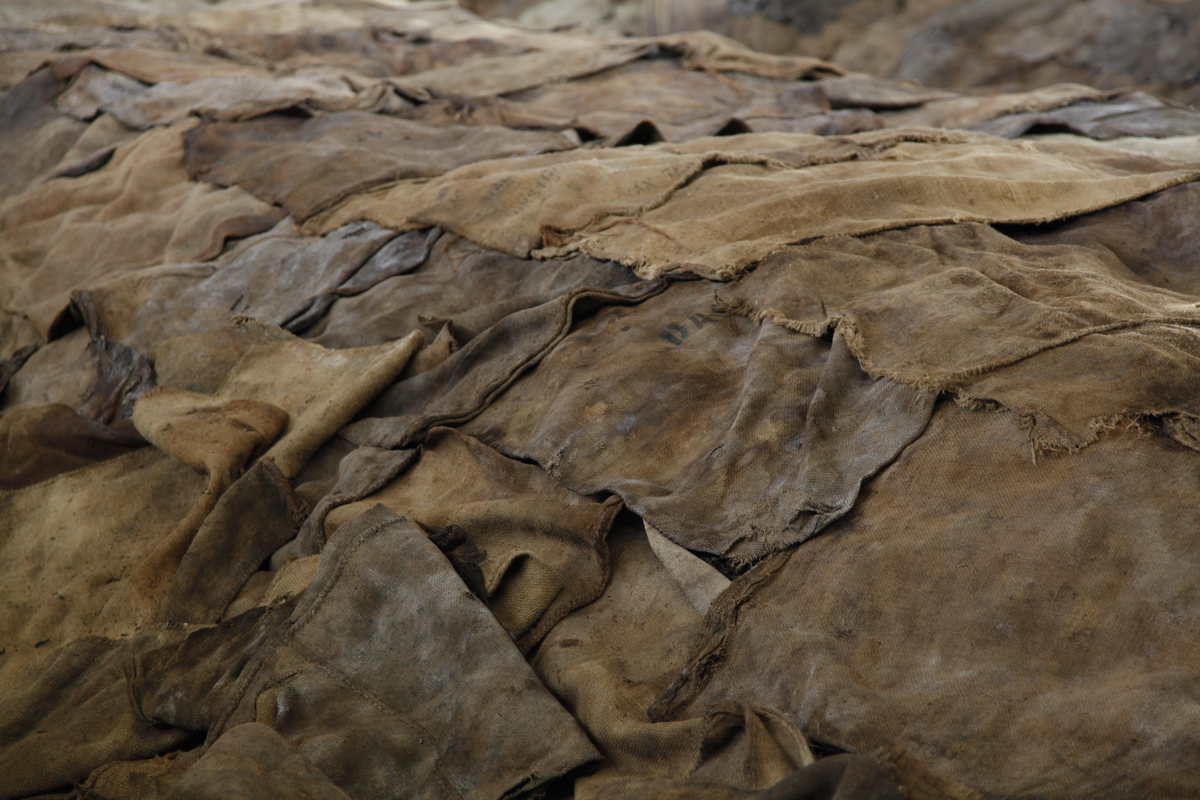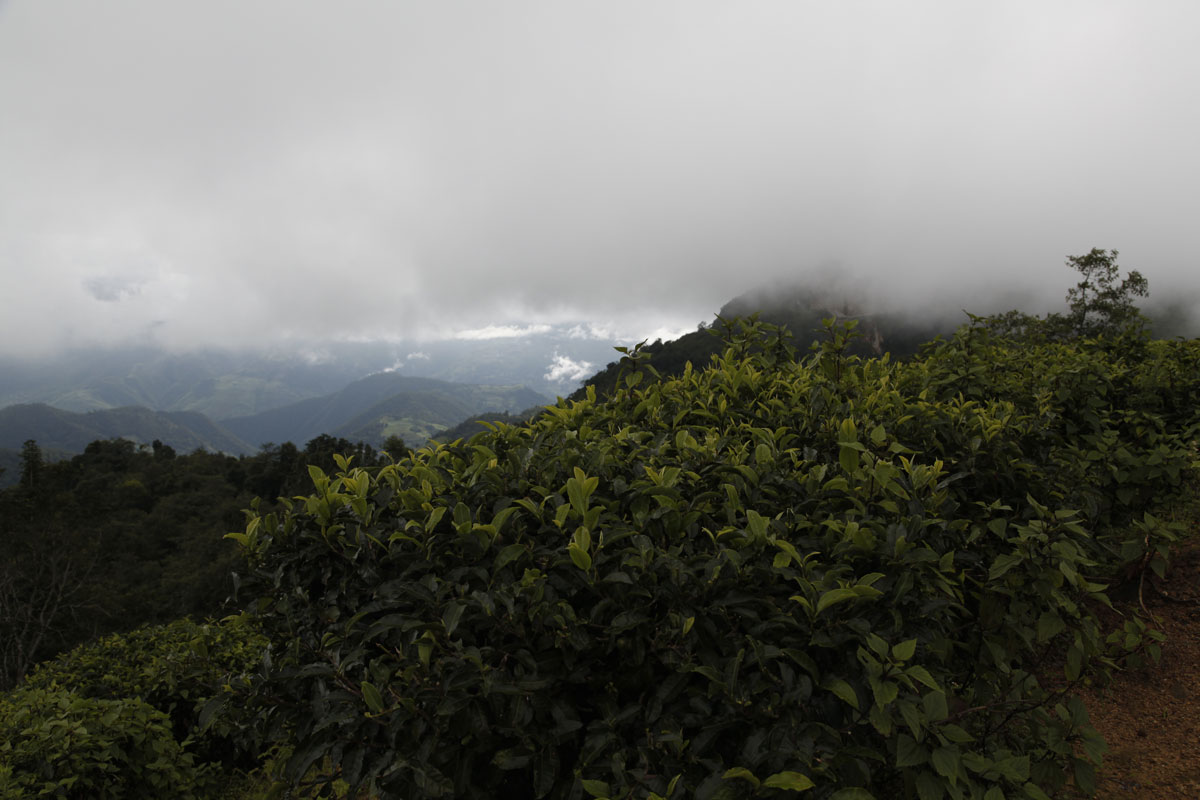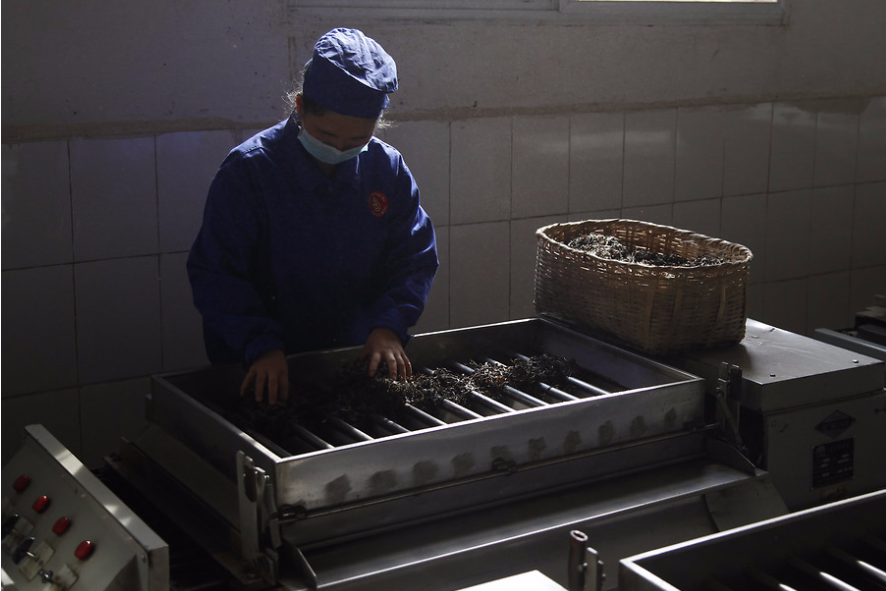Right down to the extreme south of Japan you can find these tea fields. They are recognisable for being spiked with fans, which are installed to prevent cold air from lingering around the tea plants. Here, I’m close to Kagoshima Bay, visible in the background, an important tea-producing region in the archipelago.
From plant to cup
The sinensis and assamica varieties
If you enjoy tea, you will probably know that there are two main varieties of Camellia sinensis used to make tea: Camellia sinensis var. sinensis, and Camellia sinensis var. assamica. Rather than getting bogged down in the Latin, here is a more practical explanation. The large-leaf teas come from the assamica strain, while the small-leaf teas – which have incomparable aromas and a hardiness that allows them to adapt to harsher climates – belong to the sinensis strain. It is self-explanatory that a producer looking for quantity over quality is likely to favour one over the other.
I would like to thank Laurence, manager of the Palais des Thés store on Rue du Commerce in Paris, for this photo she took while we were visiting a research centre in Northern India.
(photo: Laurence Jouanno)
Mountains in Southern India
When you think of Southern India, you think of colourful temples, ancient spice trading posts, beaches lined with palm trees, boats gliding along complex networks of canals and backwaters, and luxuriant gardens. Southern India is less well-known for its mountains. Yet what are called the Ghats, literally “steps”, peak at more than 2,000 metres above sea level. This altitude and climate is well suited to tea plants.
Holding the soil in place
Farming methods change over time. Tea bushes sometimes used to be planted following the slope of the ground, resulting in vertical lines like those visible on the left of this photo. Today, young bushes are planted in horizontal rows, to reduce soil erosion. In heavy rain, the water runs off more slowly and the tea bushes hold the soil in place.
Growing tea: essential conditions
During a tour of the Institute of Himalayan Bioresource Technology, Dr Rakesh Kumar reminded those I’d brought with me on the trip of the essential conditions required to grow tea: acidic soil (pH 4.5 to 5.5), temperatures between 15°C and 32°C, and abundant rainfall (around 1,500 mm per year). Of course, altitude, sunlight and gradient also influence the way the plants behave.
I’ve chosen this photo to illustrate gradient. It is without doubt in the Himalayan foothills that I encounter the steepest mountainsides. With copious rainfall and well-drained soil, it’s a tea plant’s dream location!
Moving towards mechanical harvesting
Plucking tea leaves by hand is labour-intensive, but manual harvesting is a mark of quality. Some research centres, like here in northern India, are working to optimise mechanisation. The bushes are pruned in a different way, and they are working to identify which type of mechanical cutting will result in the most abundant crops. I don’t have to tell you that I fear this future mechanisation, although uniquely in the case of Japan, it has already been the practice for a long time, and doesn’t affect the quality of the tea due to the great care taken by the farmers in that country.
(Photo : Laurence Jouanno)
Fine teas in the foothills of the Dhauladhar Mountains
The current tension in Darjeeling, although it seems finally to be easing, has guided my path toward new vistas this month. In the foothills of the Dhauladhar Mountains, a stone’s throw from Kashmir, a few tea plantations are well worth the detour—not only for their majestic view of the Himalayas, but also for the hard work of several local producers, which is unquestionably paying off. For decades, the region produced a relatively ordinary green tea for local consumption, but more recently, if you look hard enough, you can find a wide variety of more artisanal teas to delight the palate. All while gazing at the Dhauladhars, naturally.
Cooked Pu Erhs: an autumnal palette
What possible connection could there be between these tattered old cloths and tea? Simple: these thick cloths are used to cover piles of tea leaves, keeping the oxygen out. In the damp, dark environment, the tea will ferment. This is a crucial step in processing cooked pu erh teas. Every day, someone will check the temperature of the leaves, letting in a bit of air if they get too warm. They will also dampen the leaves several times over the forty days or so of ripening, covering them again immediately each time. In the cup, cooked pu erh teas develop notes of wood, undergrowth, caves, damp earth, straw, humus, leather, and liquorice, and it makes me smile to think that these cloths with their shades of brown express the same sense of autumn as the scent bouquet of the teas they cover.
Head in the clouds
The mountains covered with tea plants rise so high and the clouds sometimes fall so low that there is no room left for the sky. The clouds cover the green blanket of tea plants with mist, envelop them in a layer of cotton wool, caress them, and then disappear. I could stay for hours, in each tea field I walk through, contemplating the beauty of the landscape. And the more I climb, the greater the reward. Tea doesn’t grow above 2,000 to 2,200 metres, but at those altitudes the views are breathtaking. If the mist lets you see them.
Rolling Mao Cha
Mao Cha – the raw tea from which Pu Erh is made – increasingly undergoes a rolling stage. Right after the leaves have been withered then heated in a wok, they are placed in a machine that shakes them from side to side, rapidly and regularly. The leaves hit the vertical sides and gradually their shape changes – they curl up gently lengthwise. Rolling takes place with most teas, it shapes the leaves. With green teas, for example, it breaks down the cells and releases the aroma compounds that oxidise or ferment.

